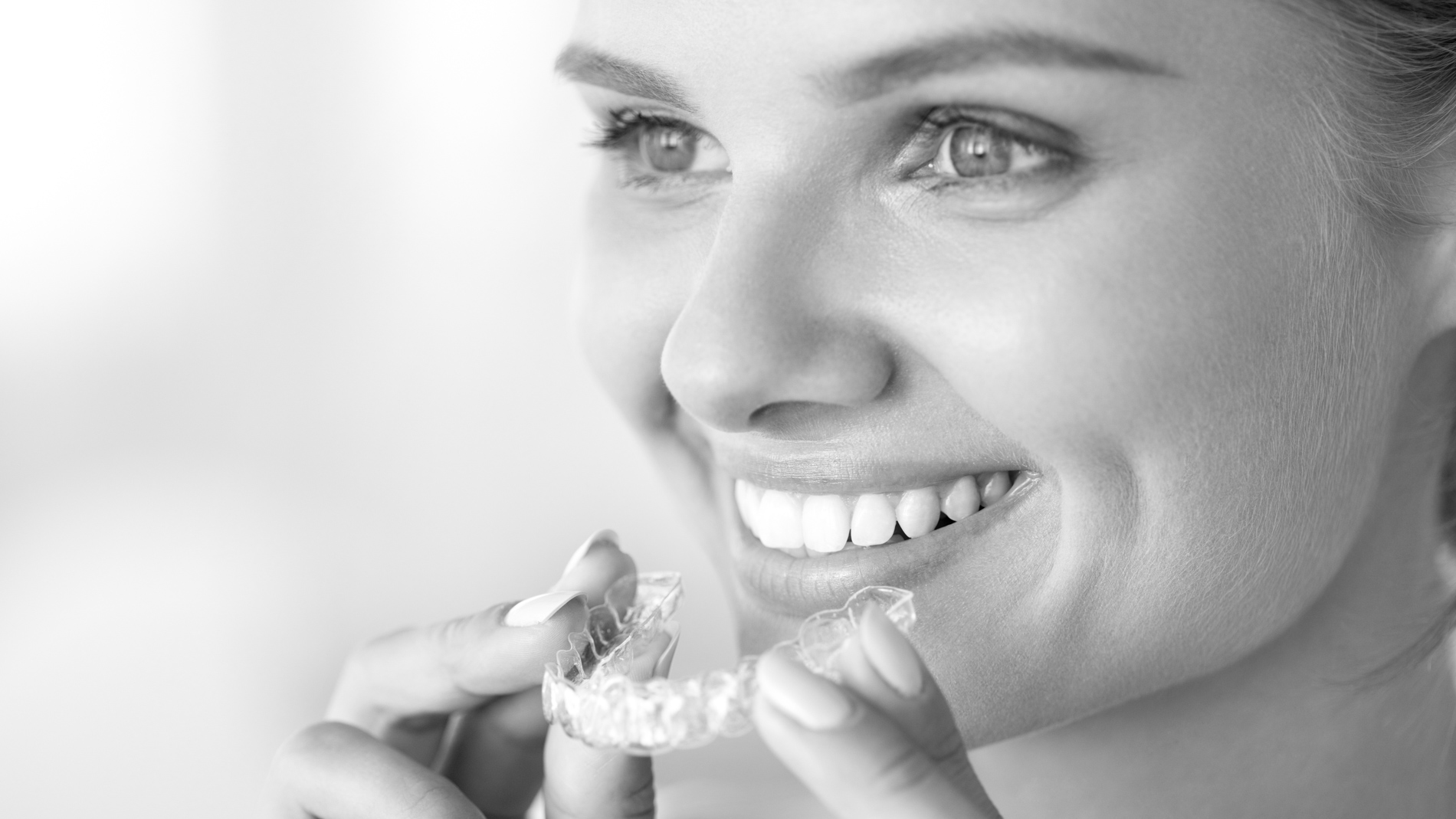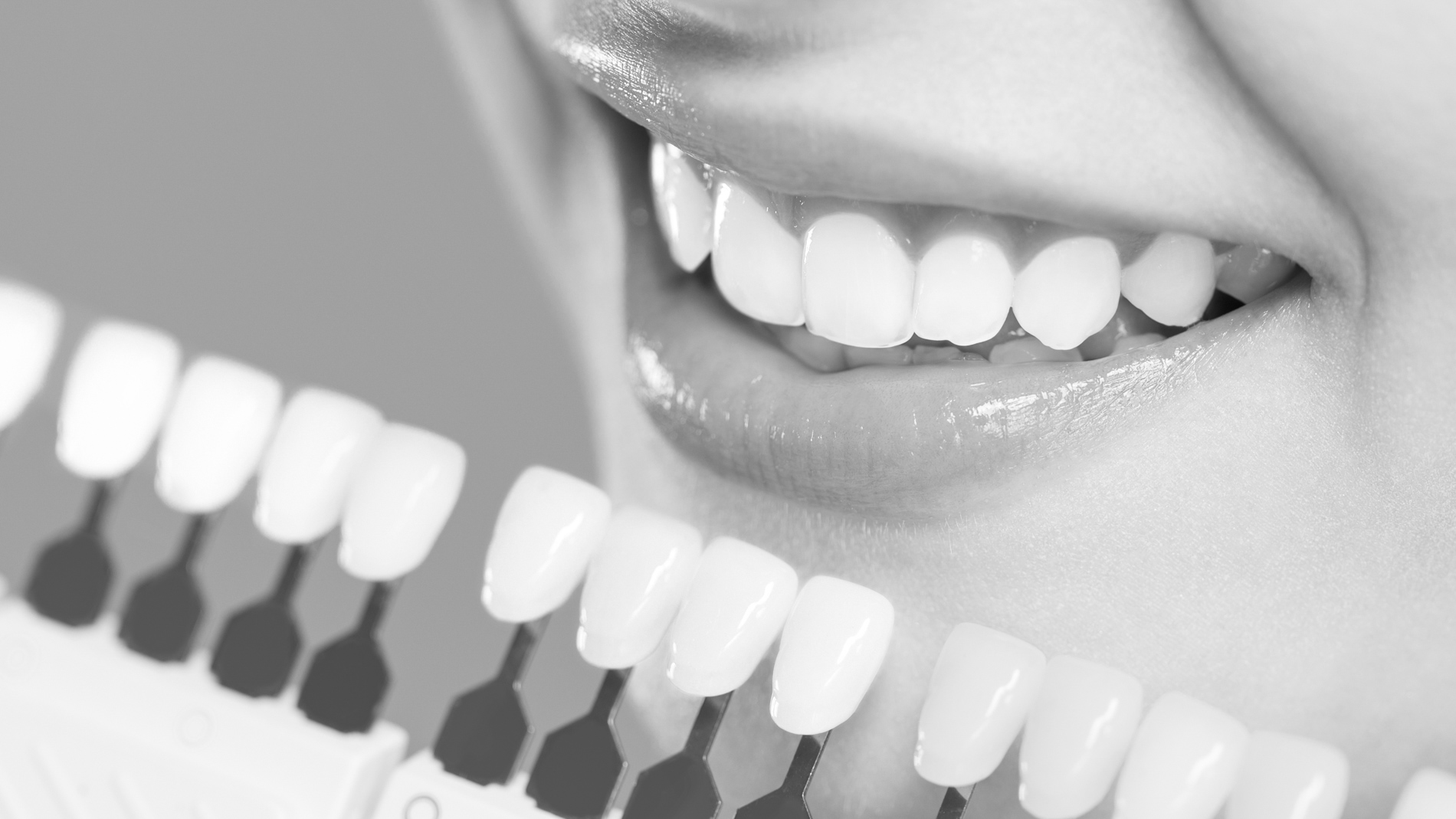Teeth whitening then and now
Teeth whitening is currently one of the most popular procedures in cosmetic dentistry with more than 92% of American patients undergoing it. Historically first teeth whitening procedure was performed 120 years ago with the help of hydrogen peroxide. The technique was invented by an American dentist Westlak in 1895. There are many substances used for teeth whitening nowadays but none has proved as effective as hydrogen peroxide or its milder form the carbamide peroxide.
How teeth whitening works?
How does the whitening effect actually happen? The active substance of carbamide peroxide is broken down which releases oxygen. Oxygen penetrates into tooth enamel which causes the breakdown of discolouration. There are various methods of teeth whitening in which the same chemical substance is being used but varying in its concentration. Studies have shown that no damage will be incurred when the whitening is performed on healthy teeth. Bearing in mind, of course, that a professional consultation takes place before the procedure. Patience is also very important as teeth can remain sensitive throughout the whole whitening process (roughly 10 – 14 days), although some patients might never experience it. Through this process a patient should abstain from consuming colour pigmented foods and drinks and smoking.
How long does it take?
If you decide to get a whiter smile you might need to spend one to three sessions in the dentist chair. A dentist will determine whether a patient is a suitable candidate for the procedure. He will need to asses the state of patient’s tooth enamel: cracks, erosion, degree of abrasion, exposed teeth roots, possible gum infection, periodontitis and caries. It is also important to bear in mind that the whitening is not applicable to fillings, crowns, veneers or laminates, so these might end up looking darker after the procedure.
Dentist might suggest at home whitening which consists of wearing a teeth tray lined with a special substance of carbamide peroxide. The tray should be worn on teeth daily during the timespan of 11 – 40 days, for 3 – 8 hours a day.

Is teeth whitening durable and does it have to be repeated?
The whitening effect is not permanent, however. The durability of the effect might be cut shorter by various factors like smoking, drinking coffee and red wine, consuming pigmented foods like beetroot etc. If the teeth should start to yellow again, it is recommended to boost the whitening effect by applying teeth whitening trays or strips at home. The whitening procedure should be repeated every 6 months after the dental hygiene. In some cases however, the “boost whitening” would need to be performed in the doctor’s office.
Drugstores, pharmacies and dental clinics are offering a wide array of teeth whitening devices: toothpastes, gels or special teeth trays. There are also a lot of available whitening methods performed by dentists in the clinics.
So what is the best choice?
Teeth whitening is a very complex science which incorporates various methods but it is essentially a process which is altering the natural colour of teeth. Dentist have a special colour shade scale at their disposal. The maximum whitening effect can only be achieved by a professional procedure and the colour altering effect can only go 1,5 to 2 shades up on the scale. Teeth whitening is quite a complex procedure achieved by the help of special gels that should only be used by patients with perfectly healthy teeth.
Whitening with these gels causes the demineralisation of tooth enamel. This process strips the tooth enamel off the fluorine which makes the tooth more sensitive. Calcium is integral to the strength of enamel while fluorine is integral to its permeability. That is why teeth can become hyper sensitive to salty, sour, spicy and sweet flavours after the whitening, as well as to consumption of cold and hot substances. The patients are advised to use a toothpaste rich in calcium after the procedure to promote the restoration of enamel strength.
Home teeth whitening
We advise against at home whitening kits. People who experiment with these often end up damaging their teeth. The at home method is usually comprised of putting on a special anatomical teeth tray lined with the whitening gel, which needs to be worn for some period of time. However, the patient is usually unable to correctly determine the right dosage of gel or put the tray on in the correct position. Patient is also running a risk of burning his/her oral mucosa, in case the gel gets into contact with it. Therefore if you want to be on the safe side and avoid the necrosis (decay) of your tooth enamel, we advise you against whitening your teeth at home.


